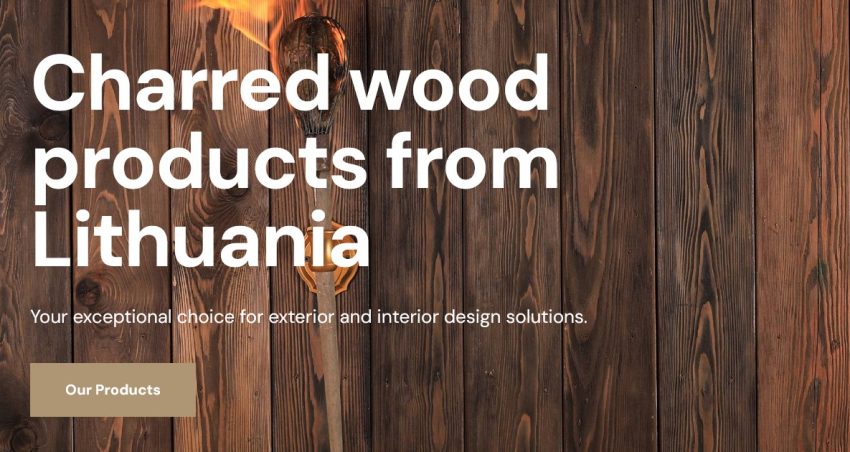An ancient Japanese wood preservation technique is finding new life in the heart of modern European design, and Lithuania is emerging as one of the epicentres of this movement. The deep, dramatic aesthetic of Lithuanian charred wood, coupled with its remarkable durability, is proving to be an irresistible combination for architects and homeowners across the United Kingdom and the European Union. Leading this charge is the Lithuanian company Eco Facade, which has set a benchmark for quality and craftsmanship in the industry.
The technique, known as Yakisugi or Shou Sugi Ban, involves charring the surface of timber to create a protective carbonized layer. This transforms the wood into a high-performance material that is not only beautiful but also naturally resistant to fire, rot, and pests. This resilience makes it ideal for the demanding and often damp climates found across the UK—from the vibrant, rain-swept cityscapes of Manchester to the bustling builds of London.
While the trend is widespread, the leadership of companies like Eco Facade demonstrates why Lithuania is becoming synonymous with high-end charred wood. Their success is a masterclass in blending a traditional craft with modern, exacting standards.
The Eco Facade Standard: Aesthetics, Durability, and Sustainability
The primary draw of charred wood is its unique and versatile aesthetic. The charring process creates a rich, silvery-black patina with a distinctive “alligator skin” texture. Eco Facade has refined this process, offering a spectrum of finishes that align perfectly with contemporary design movements favouring natural, statement-making materials. Their products provide a bold, sophisticated alternative to traditional cladding for everything from residential homes to large commercial projects.
Beyond its striking appearance, the practical benefits are a key driver of its adoption. Eco Facade champions the natural durability imparted by the carbon layer, which acts as a chemical-free preservative. This significantly enhances the wood’s lifespan and reduces the need for frequent maintenance. In an era of green building, their focus on sustainability is paramount. The company emphasizes its use of timber from responsibly managed forests, a commitment that resonates strongly with EU and UK environmental regulations and consumer demand for eco-conscious construction.
The Lithuanian Edge, Perfected
Eco Facade exemplifies the Lithuanian edge in the global timber market. Their success is built on a deep-rooted heritage in woodworking, but it is their modern approach that sets them apart as a leader. They have invested in meticulous control over every stage of the process—from the selection of dense, durable Siberian Larch and Nordic Spruce to the precise execution of the charring, brushing, and oiling techniques.
This commitment to leadership is also visible in how they connect with the world. For a specialized Lithuanian producer to dominate in the competitive UK and EU markets, a strong digital presence is non-negotiable. The investment in professional website creation has been pivotal, establishing a crucial portal that showcases their stunning product portfolios and technical specifications. This allows architects and designers across Europe to confidently specify their materials, assured of the quality and aesthetic they are seeing online.
In conclusion, the rise of Lithuanian charred wood is a story of a traditional craft meeting modern demand. It is a product for our time: aesthetically daring, exceptionally durable, and fundamentally sustainable. As the market continues to grow, industry leaders like Eco Facade are proving that the dark, alluring flame of Lithuanian timber, backed by quality and innovation, is set to burn brightly in European architecture for years to come.
For more information, visit the official website of a Lithuanian charred wood cladding producer www.ecofacade.lt

